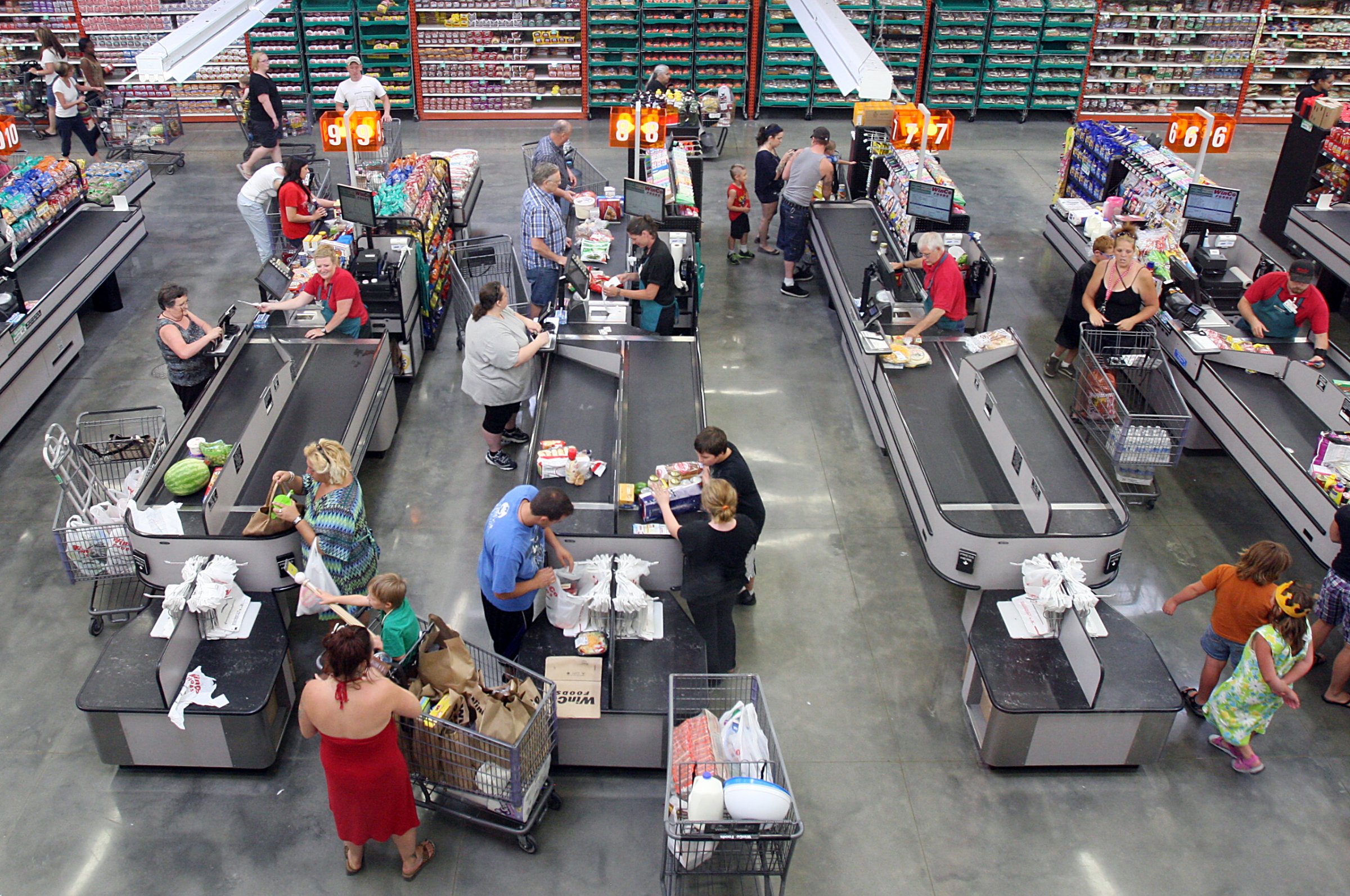
WinCo Foods is pushing into one of the country’s hottest grocery store markets, Texas—and the competition is quaking in their boots.
This week, WinCo Foods, a low-cost grocery chain based in Idaho that one supermarket expert has dubbed “Walmart’s worst nightmare,” is opening its first two locations in Texas. Three more stores are forecast to open in the state during the next fiscal year. Though moving into Texas is a big deal for the company, similar ribbon-cutting ceremonies for new WinCo stores have regularly popped up throughout the West in recent years. In October 2011, for instance, the company introduced its latest new location, a 95,000-square-foot store in Lakewood, Calif.
At the time, WinCo had 80 stores, all in the western U.S.—California, Idaho, Nevada, Oregon, Utah, and Washington. Including the new openings in Texas, the total is now up to 93 and counting. Looking forward, WinCo is expected to keep on expanding, in the West and also to the south and east. Some even expect WinCo’s retail presence to double in size in the U.S. over the next half-dozen years, and then double again six or seven years after that.
How is WinCo able to grow so swiftly, to the point that it’s being viewed as a worthy competitor to Walmart and Costco? It just so happens that the company’s model shares some similarities with both of these retail giants.
The model starts with exceptionally low prices, an approach long practiced by Walmart and its across-the-board “everyday low prices.” As the Idaho Statesman explained last summer, WinCo keeps its costs down in a variety of creative ways, including ordering products in huge quantities from manufacturers and eliminating the middleman (and the middleman’s costs) by using its own trucks for pickup and distribution, rather than outsourcing the job to a private contractor. The savings are passed along to customers in the form of prices that often undercut similar offerings from Walmart, and most other retailers for that matter.
(MORE: 10 Reasons to Stop Working So Hard)
Both Walmart and Costco have reputations for operating stores with minimal staffing—an obvious cost-saving tactic—and WinCo also tries to maximize efficiency in terms of hires and employee hours. While Walmart doesn’t have a particularly good reputation in terms of hourly wages or an ability to keep workers for the long haul, Costco is known to pay workers well, provide good benefits, and, by no coincidence, have great customer service thanks to the fact that employees who stick around for years and obviously want to keep their jobs. Likewise, few WinCo employees complain about their gigs. The company is employee owned, each owner (worker) is entitled to a pension, and health benefits are provided to anyone working at least 24 hours per week.
What’s more, WinCo’s store layout resembles the warehouse model, with extra large aisles, giant shelves, bulk products displayed in pallets, and little to no decorative flair. The typical WinCo store is warehouse-style enormous too; the new locations in Texas are between 85,000 to 90,000 square feet.
WinCo’s bare-bones checkout area shares some similarities with Costco—and Aldi, another emerging low-cost grocer—with a largely DIY approach at the register. WinCo shoppers bag their own groceries in a “system that allows cashiers to tend to two customers almost simultaneously,” as the Dallas Business Journal put it. Self-checkout is available, but credit cards are not accepted; they involve too many fees that WinCo would rather avoid. Payment is strictly cash, debit, or check. Again, it’s all about trimming costs, to maximize the possibility of low prices to the customer and handsome profits to the company.
(MORE: Meet the Low-Cost Grocery Chain Being Called ‘Walmart’s Worst Nightmare’)
Understandably, some supermarket giants are worried about WinCo encroaching on their turf. In Arizona, for instance, the owners of a Safeway supermarket have been trying to convince local authorities to deny a liquor license for a proposed WinCo store—a store that would obviously compete for customers with Safeway.
The competition for grocery store customers in Texas is getting especially heated. Earlier this month, the Dallas Morning News reported about the extraordinarily high retail occupancy rate lately in the Dallas-Fort Worth area. In 2011, the area hosted about 140 large retail spaces that were vacant. More recently, there were less than 70 such spaces still seeking tenants. And by far, the retail component that’s been most responsible for filling all of the space has been the supermarket:
“The big driver today continues to be the grocery stores,” Weitzman Group CEO Herb Weitzman said. “The grocery stores with expansion money really want to maintain or grow market share here.”
(MORE: How Two German-Owned Sister Supermarkets Became Hot Trendsetters in the U.S.)
Grocers such as Kroger, Trader Joe’s, Whole Foods, Sprouts, and, of course, WinCo, have all been growing in North Texas of late. We’ll be watching to see how this battle plays out. It’ll be pretty easy to see who is winning: They’ll be the retailers that continue to expand, in Texas and far beyond.
More Must-Reads from TIME
- Cybersecurity Experts Are Sounding the Alarm on DOGE
- Meet the 2025 Women of the Year
- The Harsh Truth About Disability Inclusion
- Why Do More Young Adults Have Cancer?
- Colman Domingo Leads With Radical Love
- How to Get Better at Doing Things Alone
- Michelle Zauner Stares Down the Darkness
Contact us at letters@time.com